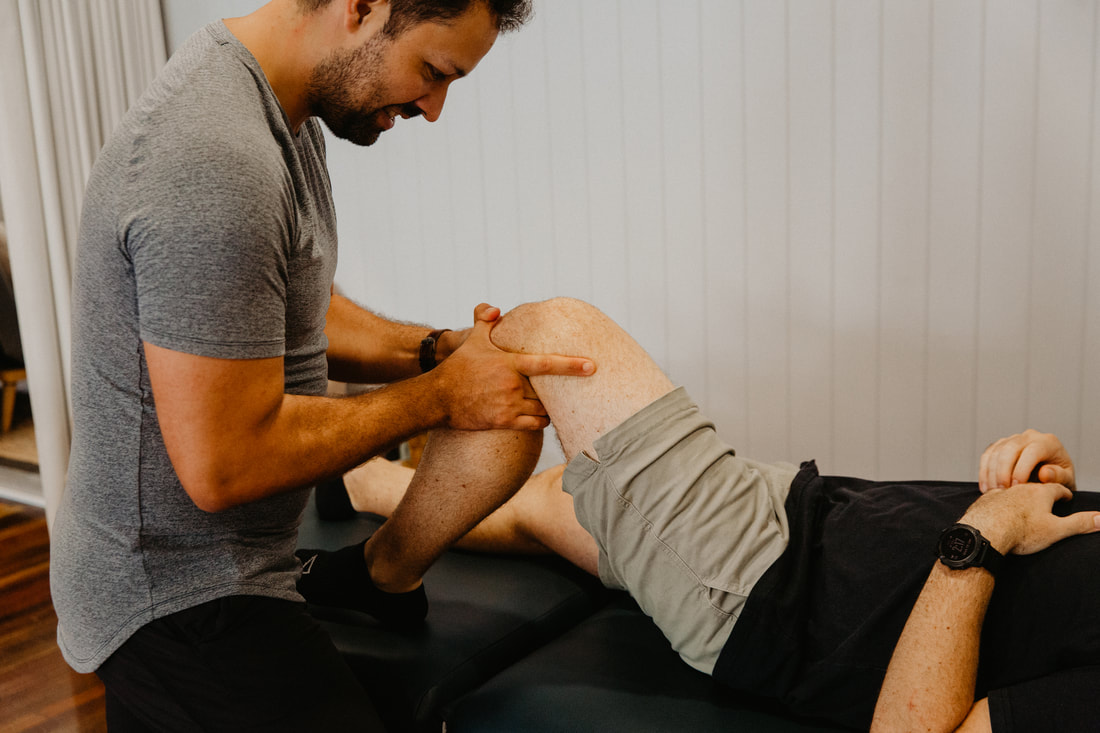Ligamentous Laxity or Knee Hypermobility Physiotherapy Brisbane southside.
What is Ligamentous Laxity or Hypermobility of the Knee?
Ligamentous laxity or hypermobility of the knee is a medical condition characterised by increased flexibility and looseness in the ligaments surrounding the knee joint. This condition can make the knee joint less stable and more prone to injuries, including sprains, strains, and dislocations. It can be a result of various factors, including genetics, connective tissue disorders, or injuries to the knee joint.
What are the causes of Ligamentous Laxity or Hypermobility of the Knee?
What are the symptoms of Ligamentous Laxity or Hypermobility of the Knee?
How can Ligamentous Laxity or Hypermobility of the Knee be diagnosed?
How can Ligamentous Laxity or Hypermobility of the Knee be prevented?
How can physiotherapy help with Ligamentous Laxity or Hypermobility of the Knee?
Physiotherapy can be highly beneficial in managing ligamentous laxity or hypermobility of the knee. A skilled physiotherapist can create a customised treatment plan to address the specific needs and challenges of individuals with this condition. Here's how physiotherapy can help:
If you or a loved one has questions about Ligamentous Laxity or Hypermobility of the Knee and how our physiotherapists might be able to help please call us on 07 3706 3407 or email [email protected]. We would love to work with you!
Ligamentous laxity or hypermobility of the knee is a medical condition characterised by increased flexibility and looseness in the ligaments surrounding the knee joint. This condition can make the knee joint less stable and more prone to injuries, including sprains, strains, and dislocations. It can be a result of various factors, including genetics, connective tissue disorders, or injuries to the knee joint.
What are the causes of Ligamentous Laxity or Hypermobility of the Knee?
- Genetics: Some individuals are genetically predisposed to having looser ligaments, making them more prone to hypermobility.
- Connective Tissue Disorders: Conditions like Ehlers-Danlos syndrome and Marfan syndrome can lead to increased joint flexibility, including the knee.
- Injuries: Previous injuries to the knee, such as ligament sprains or tears, can contribute to ligament laxity.
- Hormonal Changes: Hormonal fluctuations, particularly in women during pregnancy and menstruation, can affect joint laxity.
What are the symptoms of Ligamentous Laxity or Hypermobility of the Knee?
- Knee Pain: Individuals with hypermobile knees may experience chronic knee pain, which can worsen with physical activity.
- Joint Instability: The knee may feel unstable, and individuals may have a tendency to "give way" or experience frequent subluxations or dislocations.
- Swelling: Swelling around the knee joint can be a common symptom.
- Difficulty with Activities: Activities that require stability, such as walking, running, or participating in sports, may be challenging.
How can Ligamentous Laxity or Hypermobility of the Knee be diagnosed?
- Diagnosis often involves a thorough physical examination by a healthcare provider, including assessing the range of motion and stability of the knee.
- Imaging studies such as X-rays or MRI may be used to rule out other knee conditions and assess the joint's structure.
How can Ligamentous Laxity or Hypermobility of the Knee be prevented?
- Stretching and strengthening exercises may help prevent knee injuries in individuals with hypermobility.
- Proper warm-up and cool-down routines before physical activity can also reduce the risk of injury.
- Avoiding high-impact activities that put excessive stress on the knee joint may be advisable.
How can physiotherapy help with Ligamentous Laxity or Hypermobility of the Knee?
Physiotherapy can be highly beneficial in managing ligamentous laxity or hypermobility of the knee. A skilled physiotherapist can create a customised treatment plan to address the specific needs and challenges of individuals with this condition. Here's how physiotherapy can help:
- Strengthening Exercises: Physiotherapists can design exercises to target the muscles around the knee joint. Strengthening these muscles, including the quadriceps, hamstrings, and calf muscles, can provide better support and stability to the knee joint. Stronger muscles help compensate for the laxity of ligaments, reducing the risk of injury and improving joint function.
- Balance and Proprioception Training: Balance and proprioception exercises focus on improving the body's awareness of its position and movements in space. By enhancing balance and proprioception, individuals with hypermobility can better control their knee joint, reducing the risk of instability and falls.
- Range of Motion Exercises: While hypermobility often leads to excessive joint flexibility, it's essential to work on maintaining a balanced range of motion. Physiotherapists can guide individuals through exercises that promote healthy joint mobility without overstretching ligaments or causing joint instability.
- Joint Stabilisation Techniques: Physiotherapy may include techniques to teach individuals how to stabilise their knee joint, such as taping or bracing. These methods can provide external support and help individuals maintain proper alignment during physical activity.
- Pain Management: If knee pain is a symptom of ligamentous laxity or hypermobility, physiotherapists can use various modalities like heat, cold, ultrasound, or electrical stimulation to alleviate pain and reduce inflammation.
- Education and Lifestyle Modifications: Physiotherapists can educate patients about their condition, its limitations, and strategies to manage it effectively. This may include guidance on avoiding activities that may exacerbate symptoms and lifestyle modifications for better joint health.
- Progressive Rehabilitation: Physiotherapy often involves a progressive rehabilitation program. As patients improve, exercises and interventions can be adjusted to challenge them further and promote continued progress.
- Functional Training: Functional exercises mimic daily activities or sports-specific movements to help individuals regain confidence and function in their daily lives or sports activities.
- Patient Compliance and Home Exercise Programs: Physiotherapists may prescribe exercises and stretches for individuals to do at home. Compliance with these home exercise programs is crucial for long-term success in managing knee hypermobility.
If you or a loved one has questions about Ligamentous Laxity or Hypermobility of the Knee and how our physiotherapists might be able to help please call us on 07 3706 3407 or email [email protected]. We would love to work with you!
Who to book in with:
Yulia Khasyanova
|
Mauricio Bara
|
Monica Hanna
|



